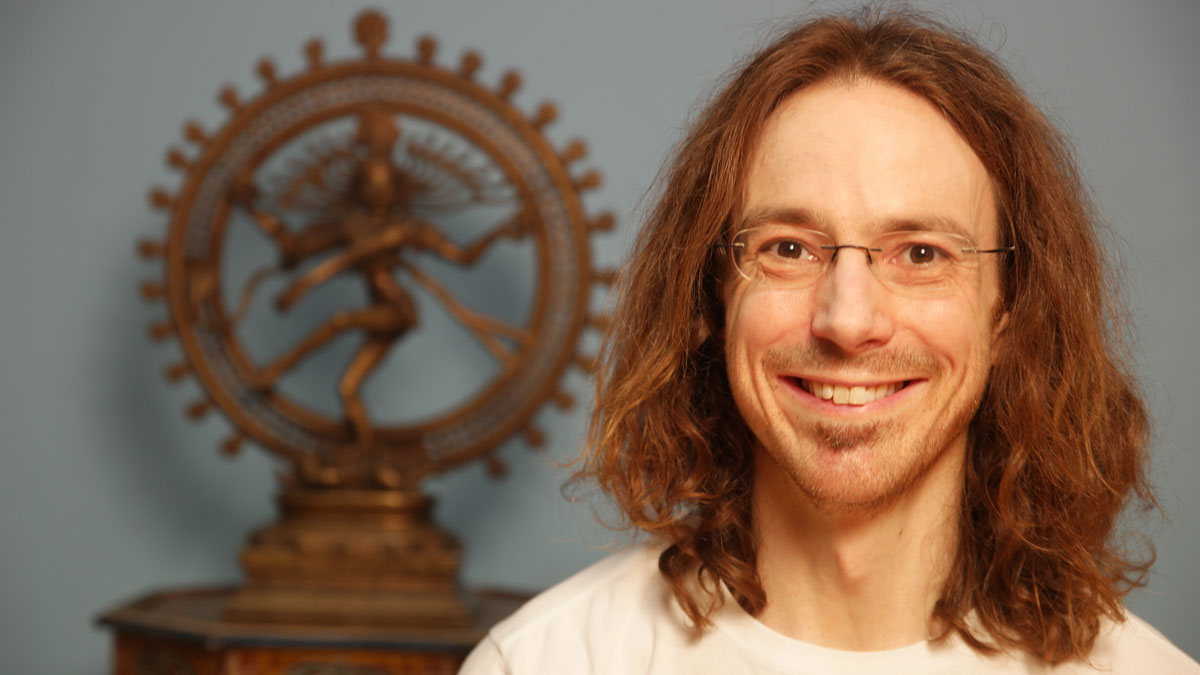Yoga Book Club: The Upanishads
Sundays, September 1 - 22, 2019
5:00 PM (UK); 12:00 PM (ET); 9:00 AM (PT)
Sundays, September 1 - 22, 2019
5:00 PM (UK); 12:00 PM (ET); 9:00 AM (PT)
Sundays, September 1 - 22, 2019
5:00 PM (UK); 12:00 PM (ET); 9:00 AM (PT)
Yoga in Early Upanishads
An online study group with Daniel Simpson
Sundays, September 1 - 22, 2019
5:00 - 6:00 PM (UK)
The first practical definitions of yoga are found in the Upanishads, whose earliest philosophical teachings date back over 2,500 years. They describe inward focus, as well as the presence of an underlying oneness pervading all things.
Exploring a selection of Upanishads together, well focus closely on the Katha and Shvetashvatara, which say most about yoga. Along with other passages, we'll also look at extracts from the Brihad-Aranyaka and Chandogya, which reveal hidden meanings to Vedic traditions.
The Sanskrit word upanishad alludes to "a secret or esoteric doctrine" with mystical significance. It also refers to connections — particularly those in an interconnected cosmos. The book club itself aims to make a connection, engaging with ancient texts in modern ways.
For four consecutive Sundays, we meet online to discuss what we've read, with handouts providing some guidance on themes to consider. There's also a forum to share conversations between weekly sessions. If you're unable to join us live, recordings can be streamed or downloaded.
It's fine to read any translation, though Patrick Olivelle's paperback version is recommended - it's part of the Oxford World's Classics series. It also comes in a hardback edition with Sanskrit, which is available online.
Format
We meet using Zoom, an interactive video app. It’s a structured discussion, but everyone is free to contribute as they wish.
You can also ask questions by email, or in a private Facebook group. If you’re unable to join us live, recordings are available shortly after.
We start at 5:00 PM, UK time (12:00 PM in New York and 9:00 AM in California), and each session lasts 75 minutes.
Week 1 - CONNECTIONS
September 1, 2019
Each of the early Upanishads is part of the Vedas. Scholars think the Brihad-Aranyaka and the Chandogya are the oldest, pre-dating Buddhism by several centuries. They mark a transition from ritual traditions of Vedic culture to liberating knowledge of the innermost self, which is one with all things. This insight is shared by sages who speak from experience, but what they describe is a truth beyond words.
Week 2 - FOUNDATIONS
September 8, 2019
The Katha Upanishad is less closely linked to Vedic ritual. Its focus is more philosophical, combining aspects of Samkhya with early Vedanta (two key strands of yogic theory). Yoga is defined as a state beyond thought, which is reached by withdrawing the senses from external objects. It also transcends time and space, as explained by a god who personifies death. Other texts, such as the Bhagavad Gita, draw on these teachings.
Week 3 - FRAMEWORKS
September 15, 2019
The Shvetashvatara Upanishad is also influential. Its description of meditative practice is more extensive and it supplements self-knowledge with devotional teachings. These resemble some parts of the Gita, distinguishing the self from a deity and matter. However, references to Shiva as the Supreme Being can be seen as a link to later Tantras, fuelling scholarly debates about when the Upanishad was composed.
Week 4 - EVOLUTION
September 22, 2019
The Mandukya Upanishad is one of the shortest, with just 12 verses. Focusing on Om, it presents non-dual teachings that form the foundation of Advaita Vedanta. This philosophy stems from a commentary on the Mandukya by Gaudapada, who is said to be the teacher of Shankara’s teacher. Other schools of Vedanta have different perspectives based on Upanishads. The Isha - another short text - can be interpreted theistically.
About the Facilitator
Daniel Simpson presents yogic texts in accessible ways.
He teaches courses on yoga philosophy at the Oxford Centre for Hindu Studies, at Triyoga in London, and on teacher trainings.
He holds a Master’s degree from SOAS, University of London, where he studied with some of the world’s leading scholars of yoga.
He is also a devoted practitioner, having first encountered yoga in India in the 1990s. His practical guidebook to yoga philosophy will be published soon.
Endorsements
Student feedback from previous courses.
“Fabulous... I got so much out of the group and from you.”
“Brilliant — really accessible, enjoyable and engaging.”
“Maybe the best yoga money I have ever spent.”



